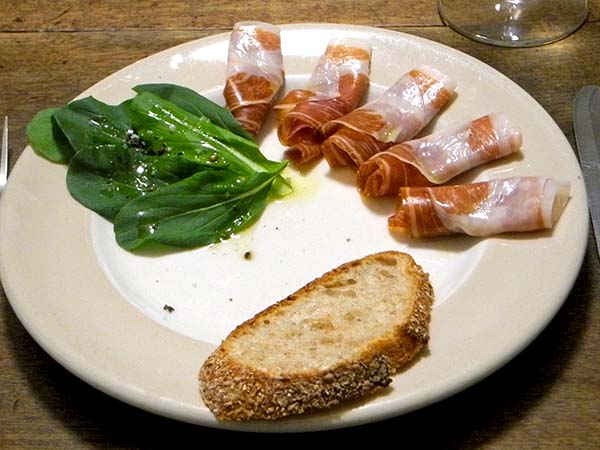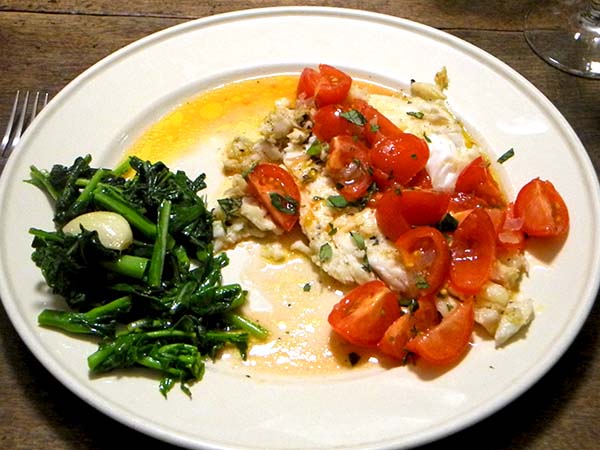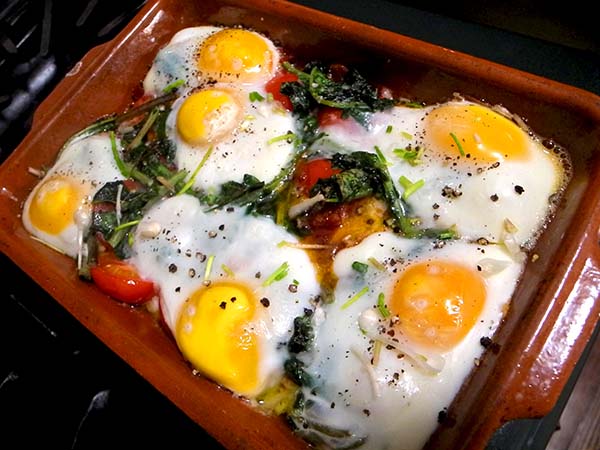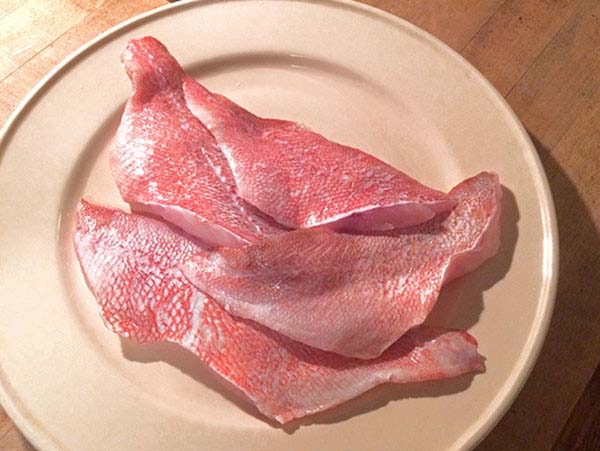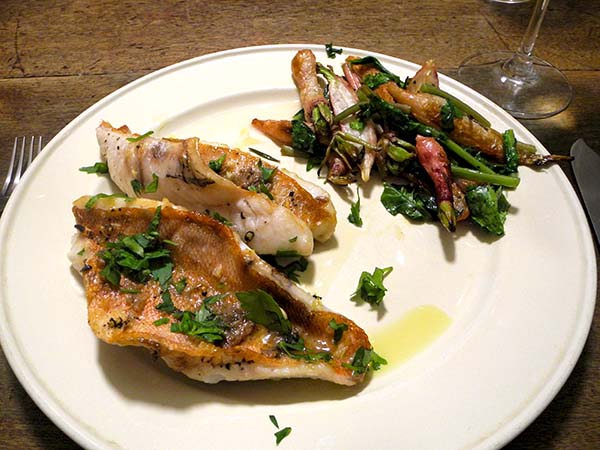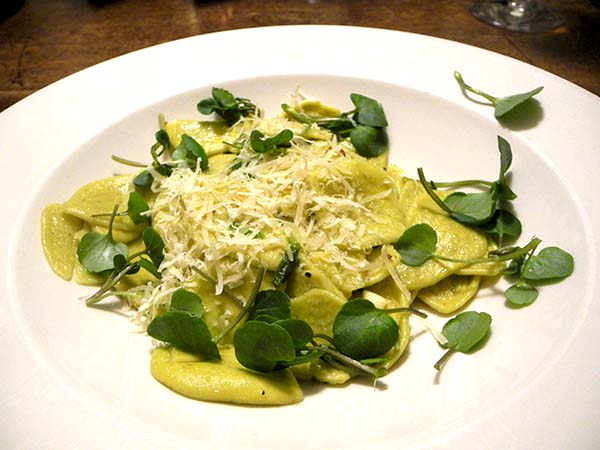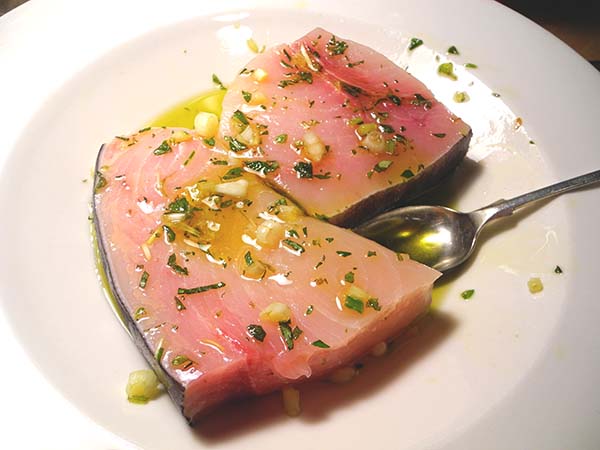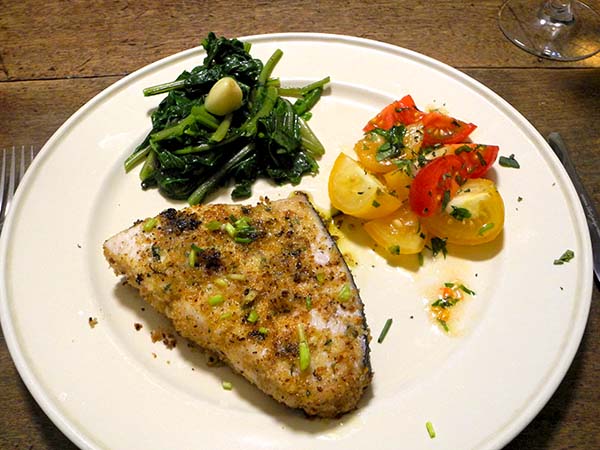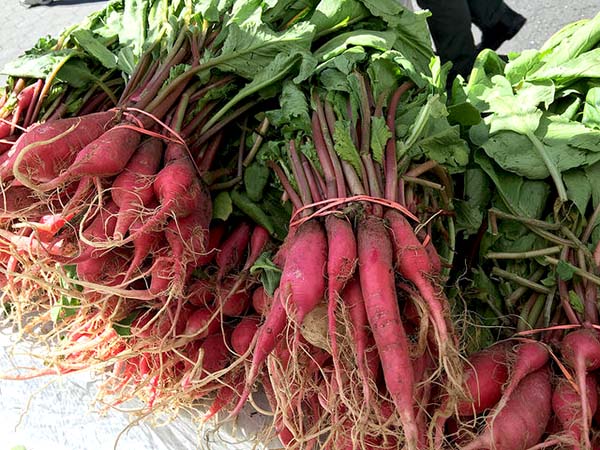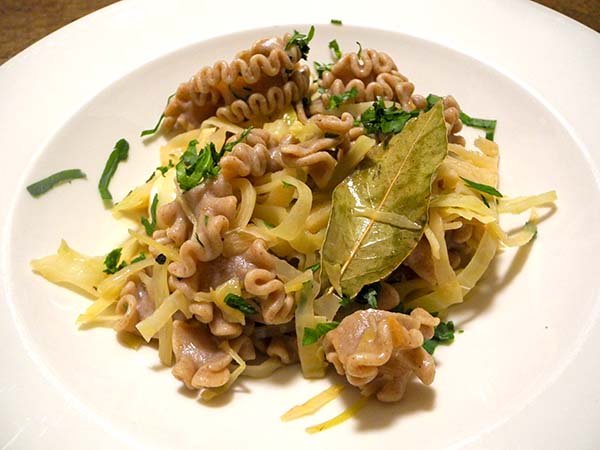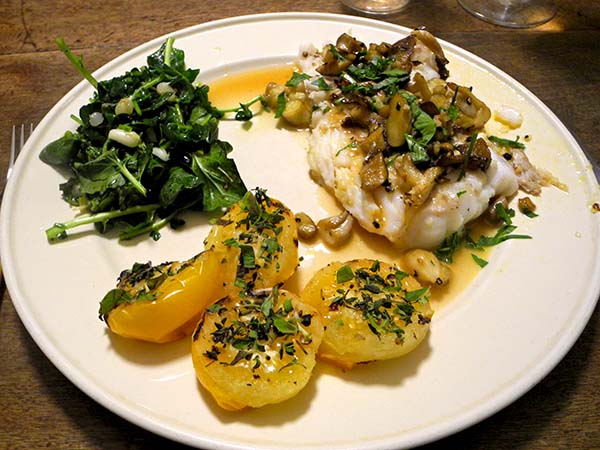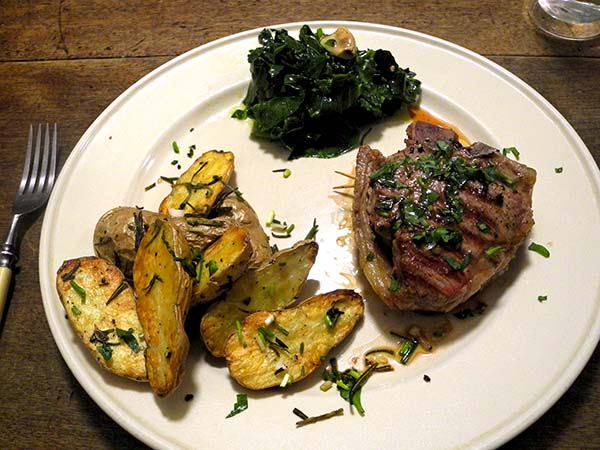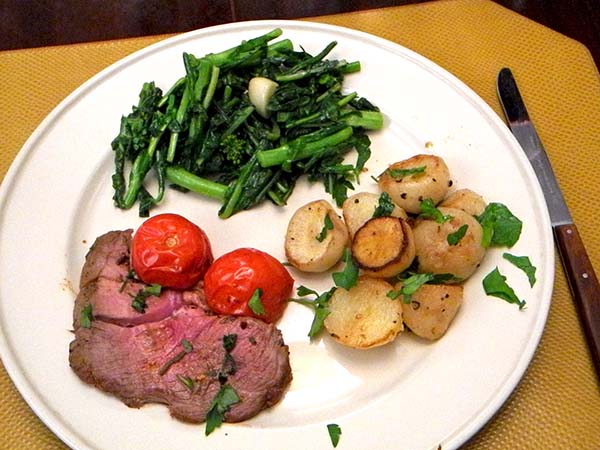
(the image was shot before its rich spicy self sauce was added to the lamb)
The little roast had been marinated with a rub of toasted cumin seed and [the equivalent of] two different chile powders, so the sauce for this partial lamb shank, once it had been produced, was unbelievably rich and complex.
When I first removed the pan from the oven, and the meat from the pan, there were virtually no juices visible, and certainly nothing worthy of being called a sauce. A few minutes later however, after I had quickly returned the lamb to the oven, I found it had produced a rich, spicy sauce, I’ll say ‘automatically’, and it was now cooked exactly medium-rare.
The recipe I started with, ‘Roast Leg of Lamb with Red Chile Crust‘, is from the book, ‘Bobby Flay’s Bold American Food‘, but I only realized once I had begun to prepare this little roast that I didn’t actually have most of the ingredients it specified. In fact , Flay asked for 2 chile powders and I didn’t have either.
I improvised, so wildly that I can’t remember what ended up in the ‘rub’ I used, although I do remembering toasting some cumin seed. The lamb turned out more than just pretty good.
My other story is about the problem of determining when something has been cooked à point. This was an especially small roast, so it was probably not going to suitable for most roasting procedures, including Bobby Flay’s (he suggested roasting for 15 minutes, at a high temperature, as a way to ‘sear’ his roast, but that would be brutal for a roast less than a third the size of the one his recipe was working with. I probably should have seared it very briefly in the pan, but I wasn’t certain that would do anything, since there really weren’t any meat surfaces to sear. In the end I just roasted it in a ‘moderate’ oven and removed it to rest on a wooden board at the moment I thought it had achieved a state of perfection.
At that moment however there were almost no juices visible, and certainly nothing that appeared to be a sauce. I should have gotten the message then, but it was only when I had begun to slice it that I realized that the outer inch or so alone had been cooked as I wanted. I quickly returned the lamb to the oven for about 7 or 8 minutes. Removing it again, I found that a genuine rich sauce had been rendered from the shank’s juices, and the meat was now cooked exactly medium-rare.
- one boneless leg of lamb, a half shank, from 3-Corner Field Farm, weighing 1.45 pounds, rubbed all over with a red chile mix described by Flay in the recipe I linked to above, allowed to rest at room temperature almost 2 hours, then simply roasted in a heavy, oval, enameled cast iron pan at 325º for about 35 minutes, maybe a bit more, removed and served with the self sauce it had produced, and sprinkled with a chopped herb (an optional gesture, and I used lovage here)
- four Backyard Farms Maine ‘cocktail tomatoes’ from Whole Foods, pricked with a fork, added to the roasting pan near the end of the cooking time, and allowed to remain inside after the lamb had been removed to a wooden board to rest for ten minutes or so, moving them about in the pan juices

- eight walnut-size purple-top turnips from Norwich Meadows Farm, scrubbed and peeled, cooked briefly (4 minutes, or until lightly browned in spots) over moderately high heat in a little butter, a fourth of a cup of good chicken stock, two thyme sprigs and a small pinch of sugar added to the pan, which was then covered, and the whole cooked for less than 30 minutes, or until the vegetables were tender, seasoned with salt and pepper and sprinkled with chopped parsley from Eataly

- broccoli rabe from from Migliorelli Farm, wilted in olive oil in which one large bruised and halved clove of garlic from Whole Foods had been allowed to begin to brown, seasoned with salt and pepper, placed on the plates and drizzled with a little more olive oil
- the wine was a luscious super California (Sonoma) red, ROX Scott Peterson All Blacks Sonoma County 2013, which we had enjoyed with lamb once before
- the music, begun earlier in the afternoon, and interrupted after the first act for a long intermission (because of all of the noise in the kitchen), was Wagner’s ‘Parsival’, in a 1992 recording from the Bayreuth Festival, conducted by James Levine, and including the soloists Waltraud Meier, Simon Estes, Franz Mazura, Matti Salminen, Hans Sotin, Michael Pabst, Matthias Hölle, Ruthild Engert, Sabine Fues,
Helmut Pampuch, Peter Maus, Deborah Sasson, Susan Roberts, Monika Schmitt, Alison Browner, Peter Hofmann, Hilde Leidland, Margit Neubauer, and Ruthild Engert, with the Bayreuth Festival Orchestra, Bayreuth Festival Chorus
